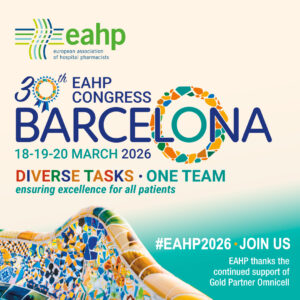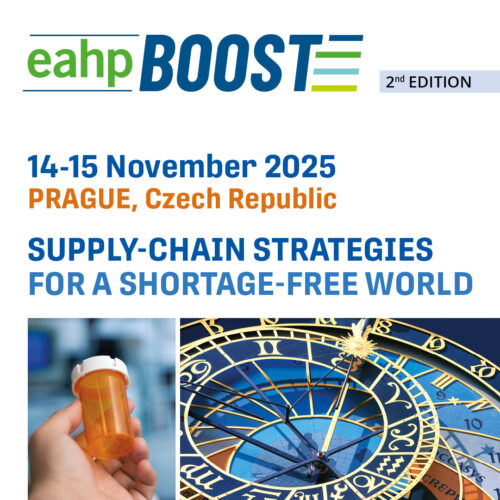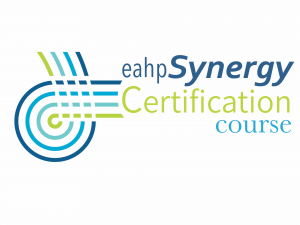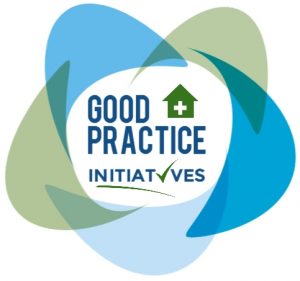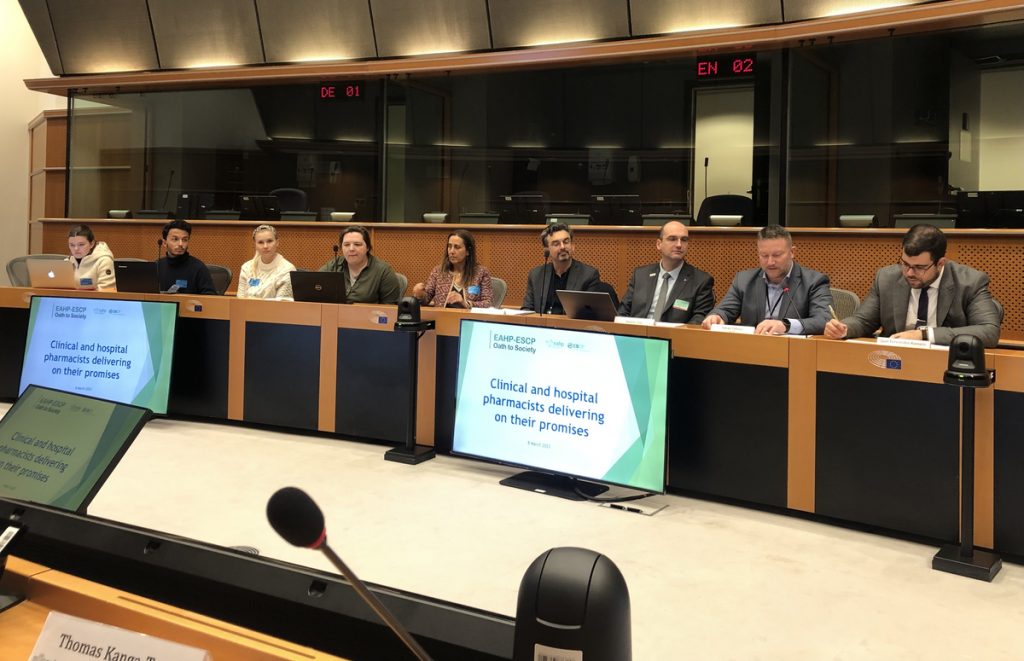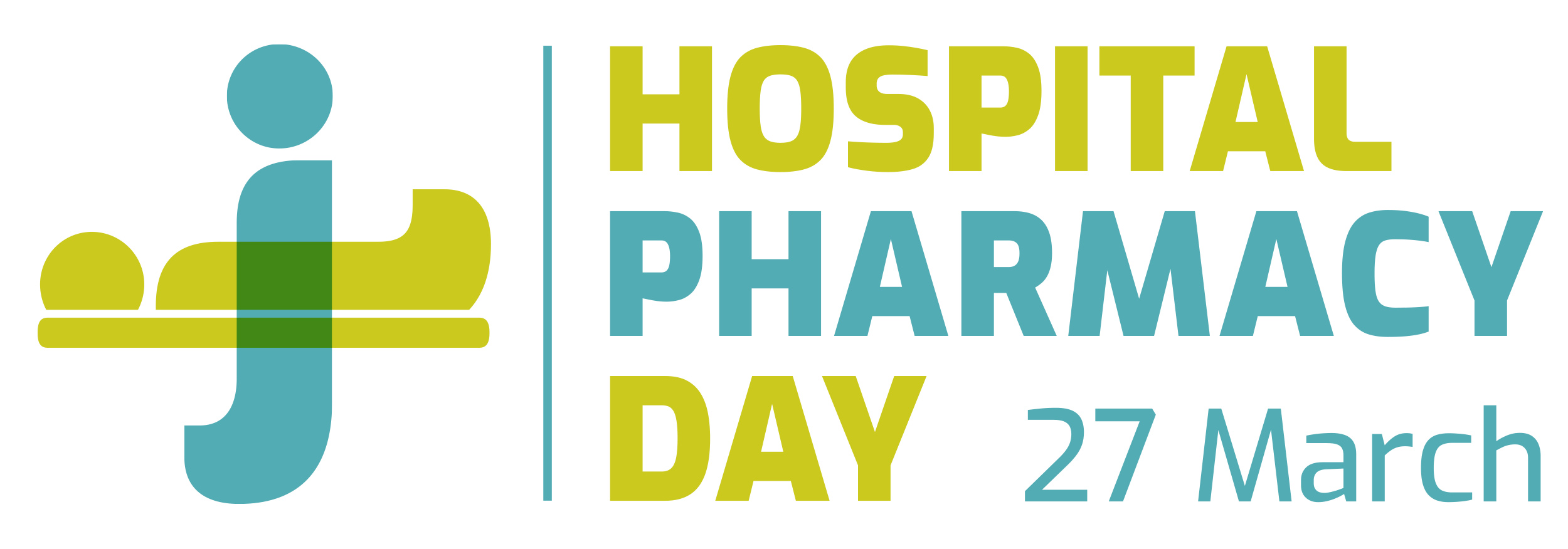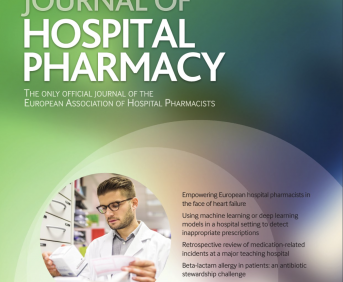ASSESSMENT OF THE APPLICABILITY OF 3D-PRINTED MEDICINES IN A PAEDIATRIC WARD
Pdf

European Statement
Clinical Pharmacy Services
Author(s)
M.S. Nielsen, The Pharmacy of the capital region of Denmark, Clinical Pharmacy Rigshospitalet, Copenhagen, Denmark
S.L. Otnes; The Pharmacy of the capital region of Denmark, Clinical Pharmacy Rigshospitalet, Copenhagen, Denmark
M.H. Clemmensen, The Pharmacy of the capital region of Denmark, Clinical Pharmacy Rigshospitalet, Copenhagen, Denmark
L.R. Duckert, The Pharmacy of the capital region of Denmark, non-sterile production, Herlev, Denmark
T. Schnor, The Pharmacy of the capital region of Denmark, production, Herlev, Denmark
Why was it done?
Paediatric medicine has limited availability of on-label, age-appropriate formulations. Drug-related challenges encompass variability in dosing, use of tube administration, and the necessity for child-friendly approaches, including formulation issues as well as taste and acceptability of medications.
What was done?
A clinical assessment of the applicability of 3D-printed medicines from a paediatric perspective, with the limitations of the chosen technique.
The aim of this project was to identify specific areas where 3D-printed medicines provide viable solutions to the complexities surrounding paediatric drug-related challenges.
How was it done?
To minimize the need for individual medicine manipulation, we identified key challenges by reviewing the manufacturer’s API list and comparing it with nationally available compounded products. This analysis offered historical insight on the shortcomings of commercial products in addressing patient needs. Additionally, consultations were held with nurses and doctors in selected paediatric wards for further input.
What has been achieved?
Three key areas were identified where 3D-printed medicines could benefit paediatric wards:
Dosage: 3D-printed medicines enable patient-specific doses or customizable low doses, assisting dose tapering and minimizing dosing errors. However, for APIs with a wide therapeutic index, the dose should be aligned with commercially available products. Patients or APIs that frequently require dose adjustments are better suited to a mixture formulation.
Logistics: Individual packaging and room temperature storage offer advantages for travel and storage compared to liquid mixtures, which often require cold storage and are produced in larger, less flexible containers. Additionally, existing options like mixtures increases the risk of losing the entire dose supply at once.
Patient related inappropriate drug form: The 3D-printed tablets can be chewed or partially dissolved, facilitating administration for patients with swallowing difficulties. Additionally, it allows for customizable flavors, offering more flexibility than commercial products.
However, the technique does not yet address the need for medication administration via tubes, as it requires heating of the tablets, which can be hazardous when handled by untrained parents. Highlighting that 3D-printing should complement, rather than replace, existing options.
What next?
A prioritized and condensed list of APIs will be conducted based on the identified key areas and assessed by pharmacists, doctors, and nurses.
Appropriate wards will be selected for the pilot implementation of 3D-printed medicines.
INCLUSION OF A CLINICAL PHARMACIST PHYSICALLY PRESENT AT THE EMERGENCY DEPARTMENT OF AN UNIVERSITY TERTIARY HOSPITAL
Pdf

European Statement
Clinical Pharmacy Services
Author(s)
JR ROMA, A RIZO, N POLA, B LOPEZ, A GARCIA, E BRAGULAT, M SANCHEZ, D SOY
Why was it done?
Several studies had been published claiming that the figure of a clinical pharmacist could improve the quality and safety of the medicines prescribed in the ED. However, little information has been published regarding its clinical impact when the pharmacist is physically present at the ED, which could enhance communication with clinicians and ED staff.
What was done?
A clinical pharmacist was included into the multidisciplinary team of the Emergency Department (ED).
How was it done?
The pharmacist performs their duties on-site from 8:00 a.m. to 11:00 a.m., Monday through Friday, joining the medical team located in the short stay unit (SSU) of the ED. The project was focused on validating and reconciling the medications of SSU patients who require short-term treatment, observation or reassessment of their initial ED treatment prior to discharge. Additional activities include logistical tasks, risk management and medication-related safety issues, with the identification of medication errors (MEs) during the pharmaceutical review. These errors are defined as any medication-related error, regardless of whether or not the patient experiences adverse effects.
What has been achieved?
During the first six months (December 2023–May 2024), 1904 clinical histories (patients) were reviewed (Mean day: 16 patients). MEs were found in 14.8% of the patients (282 patients), with a total of 338 MEs. Of these, 30.5% were reconciliation errors, 28.1% were overdosing errors, 15.1% were therapeutic duplicities and 8.9% were underdosing errors. Other identified MEs included: incorrect posology (3.8%), analytical value adjustments errors (3.0%), drug interactions (2.4%), incorrect duration (2.4%), adverse effects (2.1%), wrong administration route (1.8%), incorrect presentation (1.0%) and allergies (0.9%). The most common pharmacological class involved was antimicrobials (40.6%), followed by anticoagulants (13.2%), immunosuppressants (9.3%), and antihypertensives (7.8%).
What next?
Considering the overall satisfaction regarding the ED pharmacist figure in this setting, its work day in ED has been extended from 8:00 a.m. to 4:00 p.m. More research is needed in order to clarify if the role of the ED pharmacist working on-site at the ED can improve healthcare outcomes.
IMPLEMENTATION OF A CLINICAL PHARMACIST IN THE PAIN MANAGEMENT UNIT TEAM
Pdf

European Statement
Clinical Pharmacy Services
Author(s)
MC. SÁNCHEZ ARGAIZ, A. TRUJILLANO RUIZ, E. MÁRQUEZ FERNÁNDEZ, M. GALLEGO GALISTEO, E. CAMPOS DÁVILA
Why was it done?
A multidisciplinary approach is essential for addressing chronic pain from multiple perspectives, ensuring that treatment is personalized and effective for each patient. This structure enables faster, more coordinated solutions for patients whose chronic pain is difficult to manage.
What was done?
The Pain Management Unit(PMU) is a multidisciplinary team responsible for the comprehensive treatment and management of patients with chronic pain. The team includes: anesthesiologists, traumatologists, rehabilitation specialists, rheumatologists, internists, primary care physicians, and now a clinical pharmacist.
How was it done?
When a physician is unable to adequately manage a patient’s chronic non-oncologic pain, the patient is referred to the PMU. The unit holds weekly meetings to discuss cases and propose medical solutions, including interventional procedures such as injections or nerve blocks. The clinical pharmacist plays a key role in this process by reviewing the patient’s current analgesic therapy and chronic medications in advance, assessing their appropriateness, potential drug interactions, and considering alternative analgesic strategies. Additionally, the pharmacist provides recommendations on the temporary suspension of antiplatelet and anticoagulant therapy for patients scheduled for procedures. On a quarterly basis, the pharmacist also identifies patients with chronic non-oncologic pain who are prescribed high-dose opioids, facilitating a review by the treating physician to promote safer and more rational opioid use.
What has been achieved?
-Optimization of analgesic therapy: Through collaborative reviews with the team, analgesic treatments have been more precisely adjusted, reducing unnecessary opioid use and favoring safer, multimodal approaches.
-Prevention of hemorrhagic and thromboembolic complications: Timely recommendations on the suspension of antiplatelet and anticoagulant therapy before invasive procedures have minimized risks.
-Promotion of safe opioid use: The quarterly identification and review of patients on high-dose opioids has reduced the risk of overdose, dependence, and adverse effects, ensuring safer pain management.
What next?
The integration of the clinical pharmacist into the PMU has shown a clear positive impact on the safety and effectiveness of chronic pain treatments. Moving forward, it would be beneficial to evaluate, at six-month intervals, the interventions proposed by the pharmacist and accepted by the medical team. This evaluation would provide valuable insights into the long-term benefits of pharmacist involvement and help refine the collaborative approach to pain management.
THE OCCURRENCE OF SHORTAGES AMONG COMMONLY USED MEDICATIONS AT COPENHAGEN UNIVERSITY HOSPITAL, AMAGER AND HVIDOVRE (AHH)
Pdf

European Statement
Clinical Pharmacy Services
Author(s)
Ina Vierø Rinder, IVR
Why was it done?
Handling medication shortages in the hospital pharmacy are time-consuming, and a lot of resources are used to find alternatives. Though shortages are a national focus in Denmark, shortages are not a priority focus in the local hospital pharmacy. Shortages are often handled “on-the-go” locally and therefore not prioritized. The hospital pharmacy uses “Medication News”, posted on internal website, to broadcast information about long-term shortages to the hospitals. The aim was to determine the occurrence of shortages among commonly used medications at Copenhagen University Hospital, Amager and Hvidovre (AHH).
What was done?
A top 100-list of most bought packages of individual chemical substances (ATC5-level) was generated. The purchase data were obtained from the hospital pharmacy at AHH for the period from October 2023 to September 2024.
How was it done?
The list was analyzed to determine how many medications had experienced shortage during the specified period. The analysis was conducted by reviewing past “Medication News”, historical e-mails regarding shortages, and the hospital pharmacy’s own record of shortages.
What has been achieved?
The top 100-list of most bought packages of individual chemical substances (ATC5-level) revealed a total of 1149 item numbers. The 500 item numbers in ATC-level V07AZ** (Chemicals and reagents for analysis) were excluded due to their use. Of the remaining 649 item numbers, 43 item numbers had experienced shortage during the specified period. Of the 43 item number shortages, 22 (51 %) had resulted in a “Medication News” on the internal website. The shortages were distributed in the ATC-levels A (16 %), B (9 %), C (5 %), D (2 %), H (9 %), J (12 %), L (5 %), M (7 %), N (30 %), R (2 %) and S (2 %).
What next?
The generated data of the top 100-list of used chemical substances has given rise to more attention on shortages in the hospital pharmacy. In the future it is assumed that the number of shortages will rise, and it should be possible to increase the attention of short-term shortages by using the obtained data e.g., integrate the data in a daily status meeting. Thereby the shortages can be handled as a priority and not “on-the-go”.
MONITORING OF PRESCRIPTIONS FOR VOLUNTARY INTERRUPTION OF PREGNANCY AND SPONTANEOUS ABORTION WITHIN THE FIRST TRIMESTER OF PREGNANCY
Pdf

European Statement
Clinical Pharmacy Services
Author(s)
V. Mureddu, G. Ledda, G. Adamu, M. Rivano, A. Cadeddu. Hospital Pharmacy Department, Azienda Ospedaliero Universitaria, Cagliari.
Why was it done?
Mifepristone and misoprostol are provided for Voluntary Pregnancy Interruption (VPI) and Spontaneous Miscarriage (SM) according to different reimbursement schemes, based on different gestational age. According to Summary of Product Characteristics (SPC), the use of mifepristone and misoprostol is approved only within the first 63 days of pregnancy. Recently, access to treatment for VPI and SM has been extended by the Italian Medicines Agency by the I trimester of pregnancy. VPI within the first 49 days of gestation, the use of mifepristone and misoprostol is authorized according to SPCs. From 50th to 63th days is guaranteed under the law 649/96, that allows and reimburses the use of medicines for off-label indications. From 63th to 90th is considered an off-label prescription. Regarding SM, mifepristone and misoprostol can be used within the I trimester under the law 648/96. All these different reimbursement schemes are used as part of the Italian pricing-reimbursement system.
What was done?
To ensure appropriateness, a specific prescription form has been drafted to support clinicians in prescribing according to the correct reimbursement scheme gestational age, therapeutic indication and dosage must be reported in the prescription form.
How was it done?
The development of the prescription form required a deep knowledge of both the law under which the right of abortion is guaranteed and Italian reimbursement schemes. The prescription form was introduced in October 2022.
Prescriptions of all pharmacological treatments are ordinarily made through electronic software; therefore the prescription form was uploaded. Prescriptions from 01/01/2024 to 30/06/2024 were collected and retrospectively analyzed.
What has been achieved?
Prescription forms analysis showed that a total of 83 women were treated. In 53 cases the treatment was used for VPI and in 30 for SM. In 27% of cases, prescriptions were considered as per in-label. In 66% cases, prescriptions were allowed according to Law 648/96. In 7% of cases, prescriptions were off-label.
What next?
According to the development of reimbursement schemes, the prescription form will be implemented. Italy provides universal coverage for all citizens and residents; keeping it sustainable is one of the hardest challenges of these day. The contribution of hospital pharmacists in monitoring prescriptions has a pivotal role in making equal access to these treatments.
Implementation of a sequential antibiotic therapy programme in a third-level hospital
Pdf

European Statement
Clinical Pharmacy Services
Author(s)
Ana Concepción Sánchez Cerviño, Jorge Coca Crespo, Maria Rivera Ruiz, Juan Ignacio Alcaraz López, Adrián López Fernández, Elena Pérez García, Bárbara Ubeda Ruiz, Amelia Sánchez Guerrero
Why was it done?
Sequential therapy, or switch therapy, consists of an early conversion from intravenous to oral (PO) treatment, without compromising the therapeutic effectiveness. In advantage, PO in selected cases, avoids intravenous associated risks, it is more comfortable to patients and represents an important economic saving.
The aim of the GPI was to implement a daily program that allows the pharmacist to identify the patients that would benefit from the AST.
What was done?
Implementation of a program of antibiotic sequential therapy (AST) and evaluate the outcome of the pharmaceutical recommendations carried out in a third-level hospital.
How was it done?
A database was created to select the active antibiotic prescriptions with more than 72 hours duration, susceptible to AST: metronidazole, clindamycin, levofloxacin, ciprofloxacin and linezolid.
Patients clinical criteria for initiating AST were established as:
• Temperature ≤ 37 ºC
• Systolic blood pressure ≥ 90 mmHg
• Heart rate < 100 bpm
• Respiratory rate < 24 rpm
• Oxygen saturation ≥ 90%
• Capacity for oral intake
Once the patients were identified, the pharmacist communicated the recommendation to the doctor in charge, and worked together to make a final decision.
Due to the high burden of care, the follow-up of patients who could not be substituted to PO in the first 72 hours was lost.
What has been achieved?
From October 2022 to March 2023, 453 patients on intravenous antibiotic treatment were reviewed. The mean age was 65.7 ± 20.9, and 57.4% of the patients were men.
47 patients were selected as they met the established criteria.
All the antibiotics presented a similar percentage of recommendation with a mean of 19.2% ± 6.3. Of this percentage, 59.6% of the patients were switched to oral antibiotics. Stands out linezolid, with a 83.3% of acceptance.
Lower respiratory tract infections were the most prevalent, representing 51.6% of the total. However, only 11 patients (5.1%) were suggested for AST due to the frequent use of nasal spectacles or oxygen therapy, a criterion that excludes AST
What next?
The high number of accepted recommendations shows the importance of implementing an AST programme in order to optimize antimicrobial treatment, and this initiative could be easily implemented to all Pharmacy Services.
Rethinking pharmacy and therapeutics committee procedures to achieve the efficiency required to overcome hospital complexity
Pdf

European Statement
Clinical Pharmacy Services
Author(s)
Sara Rodrigues, Sofia Pinheiro, Vandewalle Björn, Paulo Martins, Sofia Ferreira, Paulo Pereria, Jorge Félix
Why was it done?
Shared decision-making between pharmacists and physicians is key to PTC functioning and efficiency. Responsibilities include managing policies and procedures for appropriate use of high quality and cost-effective health technologies at hospitals. PTC performance is paramount to overall hospital efficiency.
What was done?
This project seeks to assess and redesign (optimize) existing Pharmacy and Therapeutics Committees (PTC) procedures within a University Hospital Centre (UHC – six public hospitals). The goal is to enable sound decision-making that significantly contributes to UHC key performance indicators, all while ensuring timely patient access to effective medication.
How was it done?
The project comprises four phases: (1) gathering feedback from stakeholders (PTC members; hospital service/pharmaceutical department directors) regarding their current involvement in PTC information flows, procedures, and decision-making; (2) developing a value-based criteria-matrix, across stakeholders, in a multiple-criteria decision analysis context, to guide future PTC decision-making; (3) rethinking PTC procedures and information flows; (4) assessing the effectiveness of the redesigned PTC model after 12 months. First phase included: a Likert-scale based survey1 for PTC members to evaluate their involvement in activities described in the internal PTC regulation, and a semi-structured interview-based survey2 for all stakeholders to characterize existing information flows and PTC mediated decision-making processes.
What has been achieved?
First phase: eight of 10 PTC members participated in survey1. Activities with 100% engagement of PTC members: prescription reviews; coordination with National PTC; monitoring of medicine utilization, antibiotics resistance and safety; advise the UHC management board. Activities with major non-engagement: monitoring/reporting of complementary diagnostics prescription (87.5%); medication therapy management programs (62.5%); National pharmacovigilance system activities (62.5%); therapy cost assessment (50%). In survey2 (n=14) authorization process for medicines utilization was accurately characterized, clearly identifying responsibilities for all clinical and pharmaceutical departments. Heterogeneity exists between urgent and non-urgent utilization requests. PTC members and pharmacy departments were more likely to use electronic platforms than clinical departments.
What next?
Next phases are under way to better support current competencies, information flows, procedures, and the shared decision-making processes offering an opportunity to rethink the PTC procedures in the University Hospital Centre and leverage efficiency over hospital complexity.
Improving the management of asthma and COPD by educating the patient on the proper use of inhaler devices
European Statement
Clinical Pharmacy Services
Author(s)
Greta DUSABE, Jonathan DE GREGORI, Teo TODESCO, Vanessa GOMES, Hélène FEYEUX, Marine AGULLO, Cyril BORONAD
Why was it done?
Chronic Obstructive Pulmonary Disease (COPD) and asthma represent a significant public health issue. Medications are administered using inhaler devices (ID) that require prior demonstration to ensure their proper use. Incorrect usage of inhaler devices might have a major influence on the clinical effectiveness of the delivered drug.
What was done?
The goal of our study was to detect potential errors in the manipulation of inhaler devices (ID) and to provide patients with appropriate information on their correct use in order to improve medication management.
How was it done?
For this study, every hospitalised adult patient with an ongoing treatment with ID underwent a pharmaceutical interview during their hospitalisation.
This interview was done using a questionnaire assessing the patient’s knowledge of their medications and a 12-items evaluation grid covering every step of proper inhalation technique.
What has been achieved?
Between June and August 2023, 27 patients were interviewed: the average age was 73 years. 34 ID manipulations were observed. Dry powder inhalers were the most prescribed DIs (68%), followed by pressurized metered dose inhalers (23%) and soft mist inhaler (9%). For 10 DIs (29%), no explanation was given to the patient. Furthermore, inhaler technique instructions were provided by a pulmonologist (65%), general practitioner (23%), pharmacist (4%), nurse (4%) and therapeutic education program (4%). The interviews revealed that 71% of patients were not familiar with the prescribed molecules or their mechanism of action. Out of the 34 DI manipulations, only 15% were performed perfectly, and 27% were not executed properly. The steps of deep exhalation before inhalation and breath-holding after inhalation were not performed in 70% and 62% of observations, respectively. Finally, 50% of patients did not rinse their mouths after using inhaled corticosteroids.
What next?
This study has highlighted the improper use of DIs, which can lead to a loss of therapeutic effectiveness. Therefore, we have developed 9 information booklets on the correct use of the DIs that describe different handling procedures for proper inhalation. These booklets are provided at the end of the interview. Educating patients on the proper use of these inhalation devices during the initial prescription or dispensing should lead to an overall improvement in patient care.
Enhance prescription review: artificial intelligence to improve efficiency and safety drug therapies
European Statement
Clinical Pharmacy Services
Author(s)
Ana Helena Ulbrich, Amanda Fonseca, Catherine Isoppo, Henrique Dias
Why was it done?
The motivation behind NoHarm stemmed from the time-consuming nature of the prescription review process, which required clinical pharmacists to assess not only drug interactions but also factors such as appropriateness, effectiveness, safety, adherence, and affordability of drug therapies. NoHarm was envisioned as a solution to systematize the workflow and provide cross-referencing of essential drug and inpatient information, thereby addressing these issues.
What was done?
The NoHarm initiative was developed to address challenges faced by clinical pharmacy teams during the prescription review process in a hospital setting. This open-source intelligent system was introduced to enhance the medication review process. The initiative was executed in a 420-bed public hospital in Brazil over a 17-month period to evaluate its impact on prescription reviews.
How was it done?
The implementation of NoHarm involved integrating the system with the hospital’s electronic health records to collect and compute all inpatient data. NoHarm utilized a drug knowledge base and intelligent algorithms to identify and alert healthcare professionals about inpatient risks. The algorithms were designed to cross-reference patient laboratory results with drug thresholds, adjust for liver and renal function, analyze drug usage patterns at the hospital, and extract patient risk factors from clinical notes, including diseases, adverse events, symptoms, and biometric data.
What has been achieved?
The number of medications assessed increased dramatically from 17,000 to 2,643,957 within the 17-month period, all while maintaining the same team size. Improved prescription review rates, rising from 65% to 94%, demonstrate the effectiveness of the system. Furthermore, these improvements in prescription reviews resulted in better clinical pharmacy services and contributed to reducing medication errors and associated risks in patient care at the hospital.
What next?
NoHarm is an open-source solution and an example of good practice in healthcare due to its achievements in streamlining prescription reviews and enhancing patient safety. Its successful implementation led to increased efficiency, higher prescription review rates, and substantial cost savings, showing its potential as a model for other healthcare settings. Its prospective global applicability makes it a solution to address medication errors and elevate the standard of care in healthcare institutions worldwide.
Implementing machine learning techniques to estimate the impact of underdosed DOACs, and aim patients at high bleeding risk in an elderly frail population treated for atrial fibrillation
Pdf

European Statement
Clinical Pharmacy Services
Author(s)
Dorian Protzenko, Vincent Hoang, Guillaume Hache
Why was it done?
We unveiled during an audit that, in the past 2 years, 19% of our hospital DAOCs prescriptions were underdosed: due to the population profile (old, frail), the conventional bleeding risk scores were consistently high and, as such, not informative. To avoid a hypothetical bleeding risk, physicians were randomly underdosing patients beyond guidelines, without any evidence regarding the efficacy.
What was done?
Using machine learning, we unveiled that underdosing direct oral anticoagulants [DAOCs] to prevent bleeding risk in an old and frail population had no significant impact on drug-related hospitalization [DRH] nor death, and cannot be supported. To help targeting patients for whom extra care would be more beneficial rather than underdosed DAOCs, we built a predictive model of bleeding events and provided risk factors among our population.
How was it done?
We performed a retrospective study, based on data collected during the audit, of patients treated between October 2020 and April 2022 with Apixaban or Rivaroxaban for atrial fibrillation [AF]. Demographic and clinical criterias (i.e., GFR, polypathology, co-medications, prescribed DAOC, respecting dosage and scheduling) were collected. The occurrence of specific outcomes (i.e., bleeding and thrombosis that led to medical care and drug seizure, DRH and death) were retrieved from the patients’ medical records. Machine learning explorations were performed using RStudio®.
What has been achieved?
119 patients were included. We modeled using logistic regression the impact on selected outcomes of underdosing DAOCs. We found out that underdosed DAOCs were associated with a lower bleeding risk (OR=0.30, CI95%[0.07;0.95]), a higher thrombosis risk (OR=6.67, CI95%[1.23;50.0]), but without any impact on DRH nor death. Unsupervised algorithms unveiled that DAOC choice (Rivaroxaban: OR=2.80, CI95%[1.15;7.13]), sex (Male: OR=0.44, IC95%[0.16;1.12]) and using dosages from guidelines (OR=3.32, CI95% [1.05;14.80]) were predominant explanatory variables regarding bleeding risk. The choice of DAOC was the only covariate that impacted DRH (Rivaroxaban: OR=2.78, CI95%[1.22;6.56]). Finally, using a gradient-boosting algorithm, bleeding risk was predicted with a 0.73 roc-auc, superior to conventional models.
What next?
Therapeutic education of patients and caregivers, telephone follow-up or pharmaceutical consultations will be implanted for patients at high bleeding risk. An audit will be performed next year to measure underdosed prescriptions rate, and improve the model with new data.





